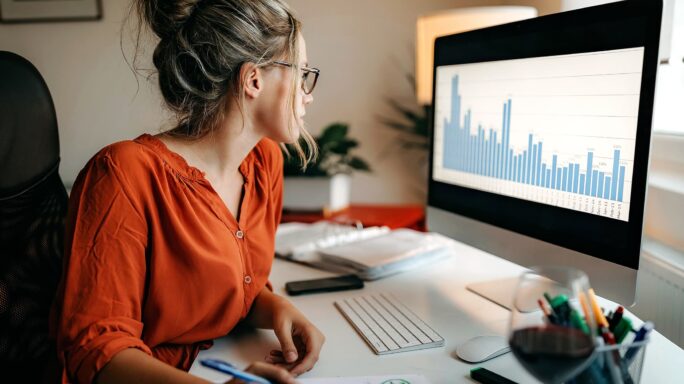Money Matters
Self-assessment FAQs: 7 answers to help you when filing your tax return
Discover answers to frequently asked questions on self-assessment tax returns and learn what you need to do, so you can file on time.

It’s been another year of uncertainty – but one thing is for certain, you still have to pay tax.
And the deadline for self-assessment is approaching.
Below are answers to seven frequently asked questions covering what you need to know and do before filing your tax return.
1. When do I have to file my tax return – and how?
2. Who needs to file a self-assessment tax return?
3. How is my tax liability calculated?
4. What are the main expenses I can claim against my tax?
5. Should I employ an accountant or submit my tax return myself?
6. How should I keep my business records?
7. What are the penalties if I’m late in paying my tax liability?
Finally, don’t leave it to the last minute…
1. When do I have to file my tax return – and how?
If you’re sending your tax return by post, the self-assessment deadline is deadline 31 October 2023.
However, Revenue discourages postal returns and the vast majority of returns are filed online. Do that and you’ll have a bit more time. That deadline is 15 November 2023.
Though no matter when the deadline is, filing earlier is always a good policy.
Marian Ryan, a tax adviser from taxback.com, says: “It’s important to note that you don’t have to wait until the deadline to file.
“It’s a good idea to pay and file early in case you encounter any issues, so that you have time to rectify them.”
Also, Revenue’s website might slow down on deadline day as all the other taxpayers try to log in and file their tax returns – and you don’t want the stress of potentially being late in filing yours.
2. Who needs to file a self-assessment tax return?
In general, you need to file a tax return if you’re self-employed or a PAYE taxpayer who earns other income, such as rental or investment income.
For PAYE taxpayers, you can submit a Form 12 if your taxable non-PAYE income does not exceed €5,000 (and your gross non-PAYE income before expenses doesn’t go over €30,000).
However, if your self-employed income exceeds €5,000, you must register for the self-assessment income tax system by completing a form TR1 or registering online through Revenue Online Service (ROS).
Once registered, you can submit your tax return via a Form 11 on ROS.
Your tax liability will comprise two elements – the balance of income tax payable from 2022 and a preliminary tax liability for 2023.
The preliminary tax should usually be 90% of the current year liability.
Once you know your total liability, you make your payment via ROS.
Stay up to date with self-assessment
Want to keep up to speed with the latest updates on self-assessment? Sign up today to receive the Sage Advice newsletter, straight to your inbox.

3. How is my tax liability calculated?
Revenue’s online system is user-friendly and based on the information you input, it calculates your tax liability, rather than you having to calculate it yourself.
The same tax scale applies for both PAYE and self-employed income.
Marian says: “The amount of tax you pay will largely depend on how much you earn and your personal circumstances.
“For example, if you’re a single taxpayer, you’ll pay 20% in income tax on the first €40,000 of your earnings and 40% on the balance.
“Meanwhile, if you’re married or in a civil partnership, and only one partner has an income, you’ll pay 20% in income tax on the first €49,000 of your wages and 40% on the balance.
“Self-assessed workers are also required to pay PRSI [pay related social insurance, typically at 4%] and USC [universal social charge] on their non-PAYE income.
“Exactly how much USC you will have to pay will depend largely on how much you earn – there is a sliding scale that stretches from 0.5% to 11%.”
Self-employed taxpayers are also entitled to Earned Income Tax Credit.
This was introduced to in some way level the playing field with PAYE taxpayers, who receive a PAYE tax credit of €1,775.
4. What are the main expenses I can claim against my tax?
For self-employed income, any expenses made wholly and exclusively for business purposes can be offset against your taxable income.
This includes:
- Employees’ pay
- Travel expenses
- Professional fees
- Rent
- Utilities
- Stationery.
If an expense incurred is both for business and personal use, then only the percentage that applies to the business may be claimed as a tax-deductible expense.
In terms of PAYE employees, certain categories of workers, such as nurses, shop assistants and plumbers, can claim flat rate expenses.
And all employees can claim tax relief if they use the bus, Luas or rail services to get to work every day by buying a taxsaver commuter ticket.
Then there are other non-business expenses that you can claim upward of 20% tax relief on, depending on the type of expense.
These include medical expenses, tuition fees, carer’s allowance and nursing home fees, and these claims can be backdated for up to four years.
As Marian points out, countless taxpayers pay too much tax each year because they don’t claim every tax relief they’re entitled to. Often because they think it’s too much hassle or they don’t understand their entitlements.
But it’s worth taking the time to understand what you can claim back as you can end up saving a decent amount of money.
5. Should I employ an accountant or submit my tax return myself?
It’s up to you whether you submit a tax return yourself or employ an accountant to go through your accounts and submit it on your behalf.
That decision depends on factors such as the complexity of your business and how knowledgeable you are about tax.
However, there are thousands of reputable accountants out there who could save you time and money, and their fees might be not as expensive as you think.
You may also find that the money spent on using the services of an accountant saves you money in the short, medium and long term.
6. How should I keep my business records?
Though you’re not obliged to send in any documents, you must retain them for at least six years, as Revenue may ask for them if it carries out an audit.
Also, particularly for the self-employed, it’s advisable to use a good accounting software package to record business transactions on a regular basis.
Marian says: “If you keep your invoices and receipts organised during the year, you will thank yourself at the tax deadline.
“A good cloud-based accounting system is available from as little as €20 to €30 per month – which is not much to spend when you’re saving yourself a world of tax trouble.”
7. What are the penalties if I’m late in paying my tax liability?
There are financial penalties if you’re late in paying your tax liability.
“But the sooner you file, the less you will have to pay in penalties,” says Ryan. “For instance, filing within two months of the deadline passing will lead to a 5% charge on top of what you owe, to a maximum of €12,695.
“After this two months, the charge rises to 10%, to a maximum of €63,485.
“In addition, there is an interest charge for late payment at a rate of 0.02% per day.”
Finally, don’t leave it to the last minute…
You need to be organised about your tax returns and leaving it to the last minute can lead to mistakes (and penalties if you’re late in filing).
So just because you’ve got a few weeks left to pay and file, don’t put the important task of filing your tax return on the back burner.
Making a start on it sooner rather than later is in your best interest.
Editor’s note: This article was first published in October 2020 and has been updated for relevance.
Self-assessment: Discover the expenses you can claim back
Learn how you can save more of your hard-earned money and ensure you pay the right amount of tax when it comes to filing your tax returns.








Ask the author a question or share your advice